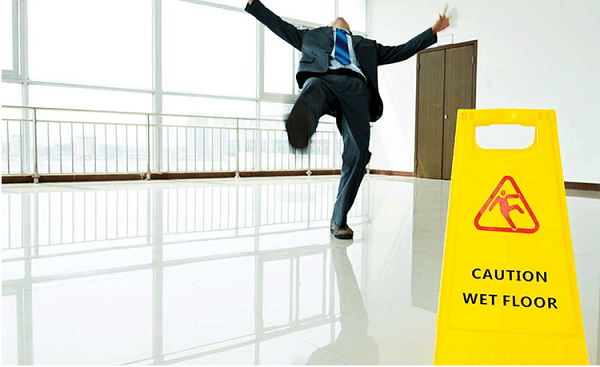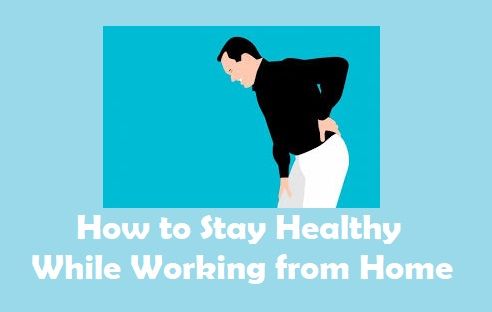Did you know that floor tiles, including marble, porcelain, and glass, in your home or workplace, can be a safety hazard? If not treated properly, floor tiles are particularly slippery when wet and dry, and can cause severe slips and falls.

It is important to understand the risk to anyone, including children and the elderly when using untreated tile areas. Fortunately, there are several ways to make the tiles slip-resistant. Not only can you enhance traction by adding anti-slip materials to your floors, but you can also invest in a variety of anti-slip tile coating products.
You must always keep your tiled floor clean, especially before treating them with anti-slip products. Keeping the floor clean of debris will reduce slipping. Let’s take a look at some ways to further reduce slippage on your floors in and around your home or workplace.
Contents
Cover Your tiles with Non-Slip Rugs
Using non-slip mats is probably the quickest and easiest way to make your tiled floor slip-resistant. I personally like rugs because I think they can brighten up an entire room and, at the same time, make it more comfortable.
However, not all rugs are created equal in safety. Loose, unsecured carpets with curved edges can be a risk of tripping and are potentially dangerous. If you want to avoid slipping and falling, you will need non-slip mats. There is also a wide selection of non-slip mats in online and offline stores.
If you want to use your current rugs, you can significantly improve safety by placing non-slip pads underneath. If your carpet has a unique shape, you can cut the cushion with custom scissors.
Apply an Anti-Slip Coating
There are many non-slip coatings available on the market to create traction on ceramic tiles. While finding an anti-slip coating to wear is not difficult, choosing one can be!
One of the most popular surface solutions is Glaze Guard. As one of the most durable and effective non-slip coatings, Glaze Guard produces a safe amount of grip in wet and dry conditions. Better than traditional wax and acrylic finishes, Glaze Guard is classified as a high-slip, high-resistance flooring that is virtually odorless. Available in shiny, satin, and matte finishes, this application is a UV stable product that will not yellow.
Other non-slip or non-slip products available include the Traction Kote 400, the SlipDoctors Stone Grip, and the InvisaTread.
Add Foam Pads to Floor Tiles
Foam pads can be purchased in large blocks or strips, as well as in a variety of colors. The foam pads create a smooth, barefoot surface. These pads need to be changed frequently, especially in frequently used areas, and can be costly if replaced regularly.
If you want to keep the aesthetics of your floors, look for non-slip treatments. Non-slip products generally do not change the appearance of your tile, are inexpensive, require little maintenance, and can be used safely on a wide variety of tile types.
Use Surface Modifiers
It is a chemical treatment that, at the microscopic level, modifies the soil surface, deepens the pores of the surface, and provides a suction effect when the soil is wet.
When you walk on it, instead of doing an aquaplane on the wet surface, your foot or shoe will stick to the ground. The reason is that the upper surface becomes more absorbent after treatment.
Non-mineral floors such as wood, vinyl, epoxy, etc. They cannot be changed as described above and require a texture to be added using a sealer or topical coating.
Make Your Bathtub or Shower Slip-Resistant
Shower and tub floors can sometimes be extremely slippery. The anti-slip treatment mentioned above makes them much safer, but if you need a really simple solution, get a safety mat.
Safety mats effectively prevent slipping in the tub and shower when applied correctly – it is important to use them on clean, smooth surfaces. Otherwise, your suction cups will not attach properly to the surface of the tub or the shower.
The Problem with Etching
Etching combined with an acid-based treatment is recommended by some flooring specialists to help slippery tiles. Although the etching makes the floor surface rougher, this method of treatment has negative side effects. For one, the appearance of the floor becomes opaque, and it is more likely to keep stains due to the destruction of the sealer layer.
While this treatment method initially creates slip resistance, the etching results are generally short-lived. The daily dirt and sediment begin to break down the treatment, and the soil can become difficult to clean and start to smell.
If the etching is repeated, the floor tiles weaken further, which can lead to the replacement of the floor much sooner than expected.
Final Thought
Slippery floor tiles are not only a nuisance, but can also cause serious injury. It is your concern to ensure that your floors have the necessary traction to avoid any accident. There are several remedies to this problem, find a solution that suits all your requirements as well as your pocket.


![How to Spy on iPhone Without Installing Software? [Updated 2020] How to Spy on iPhone Without Installing Software? [Updated 2020]](https://www.greatrockdev.com/wp-content/uploads/2020/07/spyier-box-1.png)

